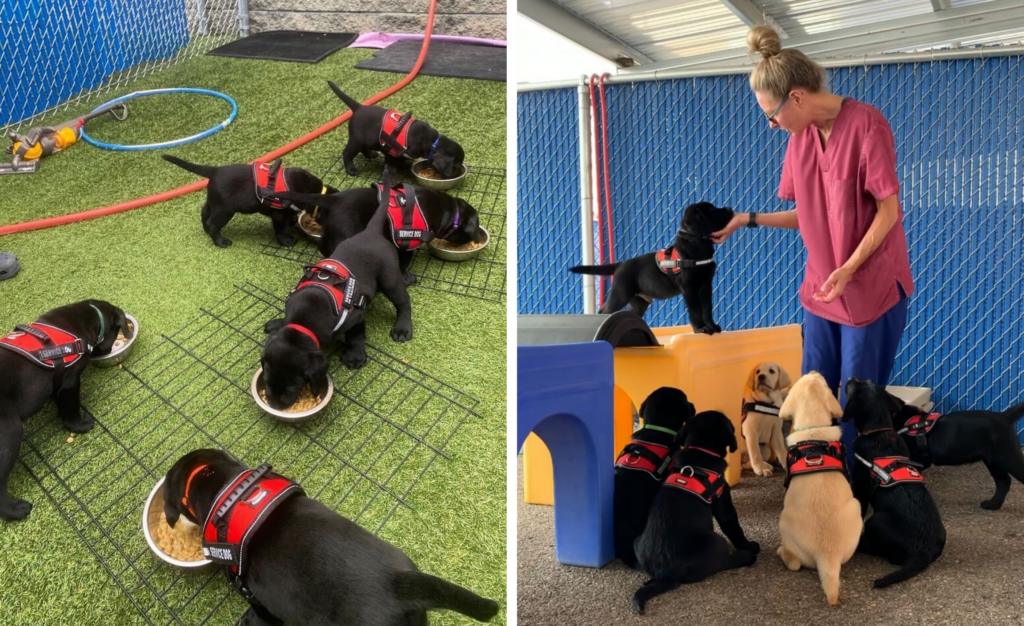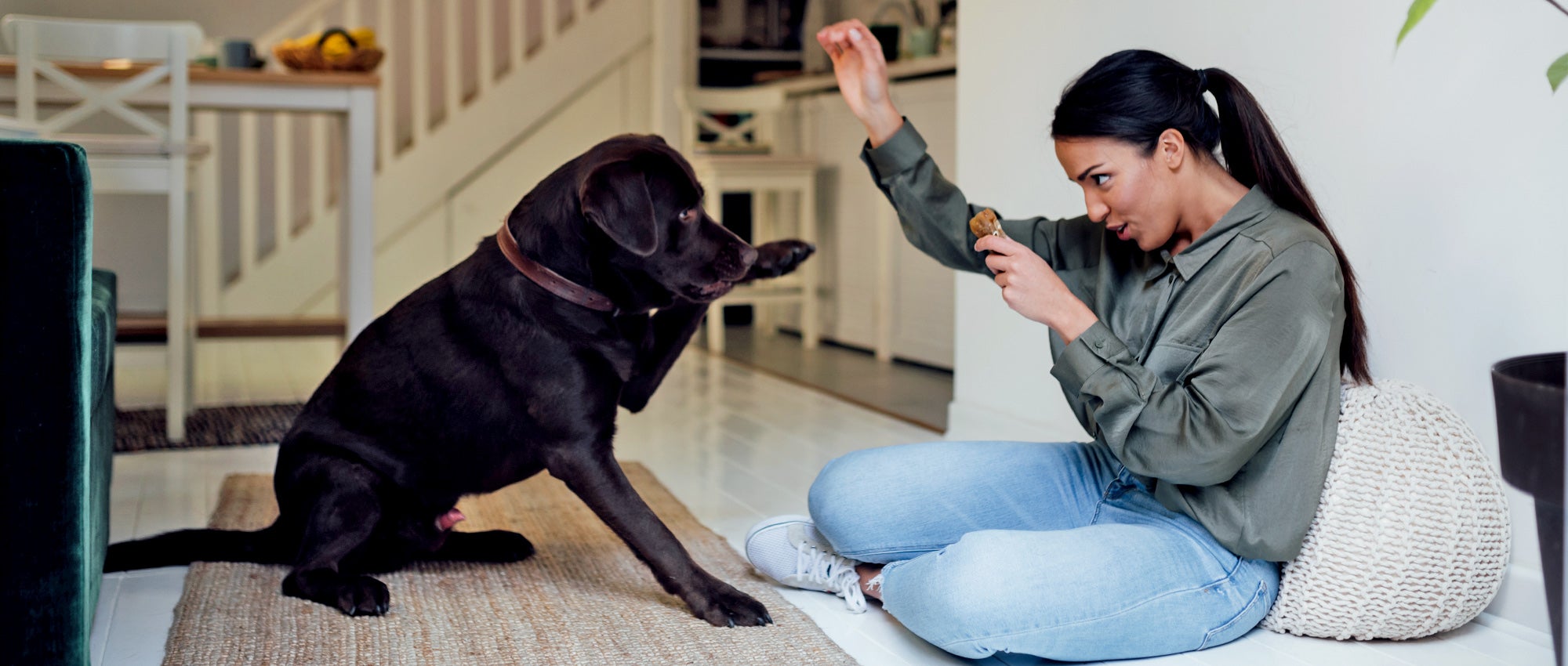Leading Pet Training Techniques Every Owner Ought To Know

Favorable Support Techniques
Using positive reinforcement strategies is important for efficient pet dog training, as it fosters a relying on bond between the pet dog and the fitness instructor. This method concentrates on fulfilling desirable behaviors as opposed to punishing undesirable ones, developing an environment for finding out. Benefits can include deals with, appreciation, or playtime, which encourage canines to duplicate the behaviors that gain them these benefits.

Additionally, this approach improves the pet dog's excitement for training sessions. They are much more involved and receptive when pets associate training with positive experiences. Dog training. Beyond instant therapy, favorable support motivates a collaborative connection in between the pet and instructor, lowering stress and anxiety and anxiety
To make the most of efficiency, it is critical to deliver rewards quickly, guaranteeing the pet dog links the habits with the support. In essence, positive reinforcement techniques not only produce better-trained canines yet also promote a harmonious partnership in between canine and owner.
Clicker Training Approach
The clicker training technique is an extremely efficient method that builds on the concepts of positive reinforcement by adding an unique sound to mark desired actions. This method utilizes a small portable tool that creates a clicking sound, permitting instructors to interact with their pets in a clear and immediate fashion. When a canine carries out a habits that the proprietor wants to motivate, the clicker is activated, followed by a benefit, commonly in the kind of deals with or praise.
The key to successful clicker training hinges on consistency and timing. It is essential to click at the exact moment the preferred behavior takes place, ensuring that the pet connects the noise with the action and the succeeding incentive. This technique not only boosts interaction however also cultivates a more powerful bond between the owner and the dog, as it encourages involvement and interaction during training sessions.
Remote control training can be put on a variety of habits and commands, from fundamental obedience to extra complicated methods. Its convenience and efficiency make it a favored strategy among specialist instructors and animal proprietors alike, leading the way for a trained and responsive canine buddy.
Leash Training Basics
Effective chain training is necessary for guaranteeing a delightful and risk-free strolling experience for both dogs and their owners. Dog training. Chain training ought to begin very early and be approached with perseverance and consistency. Begin by selecting an appropriate chain and collar or harness. A level collar might help some pets, while others might benefit from a harness that lowers drawing.
Introduce your canine to the chain progressively, enabling them to discover it in a comfortable environment. Once they are accustomed, method loose-leash strolling. This includes fulfilling your dog for strolling beside you instead of drawing in advance. Usage deals with and appreciation to enhance preferred habits, and make certain to continue to be assertive and tranquil.
If your pet dog begins to pull, stop walking right away. Wait till they return to your side before resuming. This instructs them that drawing does not result in advance. Additionally, method numerous strolling settings to aid your canine adjust to distractions.
Routine practice will certainly strengthen your pet's understanding of leash decorum. Bear in mind that chain training is an ongoing procedure; patience and consistency will yield the very best outcomes, promoting a you can look here favorable experience for both you and your canine friend.
Socializing Strategies
Socialization is an essential aspect of canine training that ought to preferably begin during puppyhood yet can be advantageous at any type of age. Reliable socializing aids canines create self-confidence and reduces the likelihood of behavioral concerns. To implement effective socialization techniques, subject your pet to a range of settings, individuals, and other pets.
Beginning with controlled setups, such as young puppy courses or organized playgroups, where young pets can communicate securely. Gradually introduce your pet dog to brand-new experiences, consisting of different noises, surfaces, and tasks. Make sure these experiences are fulfilling and positive to develop a complacency.
For adult pets or those doing not have exposure, start with low-stress situations. Short, favorable communications with tranquil canines and friendly humans can produce favorable associations. Make use of treats and praise to reinforce preferable habits during these experiences.

Uniformity and Perseverance
Recognizing the value of consistency and patience in pet training is crucial for achieving lasting results. Training a canine is a steady process that needs an organized approach and unwavering commitment from the proprietor. Each command or behavior should be enhanced continually to aid the pet dog comprehend what is anticipated of them. Inconsistent training can bring about confusion, making it challenging for the pet dog to realize commands or habits, eventually hindering progression.
Canines, like humans, learn at their very own pace. This fosters anonymous a trusting connection in between the canine and proprietor, encouraging a more enthusiastic and ready student.
To grow uniformity and perseverance, develop a routine training routine, make use of the very same commands, and ensure that all relative apply the exact same training concepts - Dog training. By doing so, you develop a steady atmosphere for discovering, enabling your pet to grow and establish right into a mannerly companion
Final Thought
In conclusion, reliable dog training strategies, such as positive reinforcement, remote control training, and correct leash training, are important for fostering a healthy owner-dog partnership. Furthermore, executing socialization techniques and keeping consistency and patience throughout the training process adds dramatically to a dog's total wellness. By integrating these approaches, canine proprietors can facilitate the development of well-adjusted, loyal pets, eventually improving the top quality of life for both the owner and the pet dog.
Amongst the most famous approaches are positive support, clicker training, and leash training, each offering unique benefits that add to a mannerly pet dog. As we check out these fundamental approaches, it ends up being evident that mastering their subtleties can considerably affect the training experience and the canine's total habits.Utilizing positive reinforcement strategies is vital for effective canine training, as it promotes a Check This Out trusting bond in between the fitness instructor and the canine.In conclusion, effective dog training techniques, such as favorable support, clicker training, and proper leash training, are crucial for fostering a healthy and balanced owner-dog connection. By integrating these techniques, dog proprietors can assist in the growth of well-adjusted, obedient pet dogs, eventually improving the quality of life for both the pet dog and the owner.